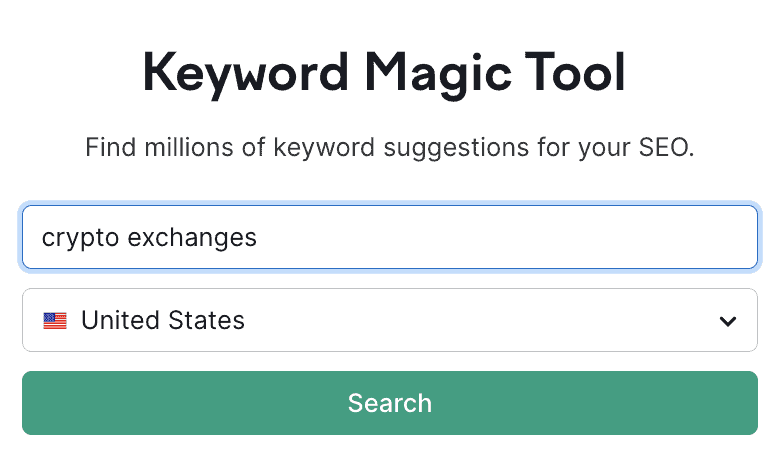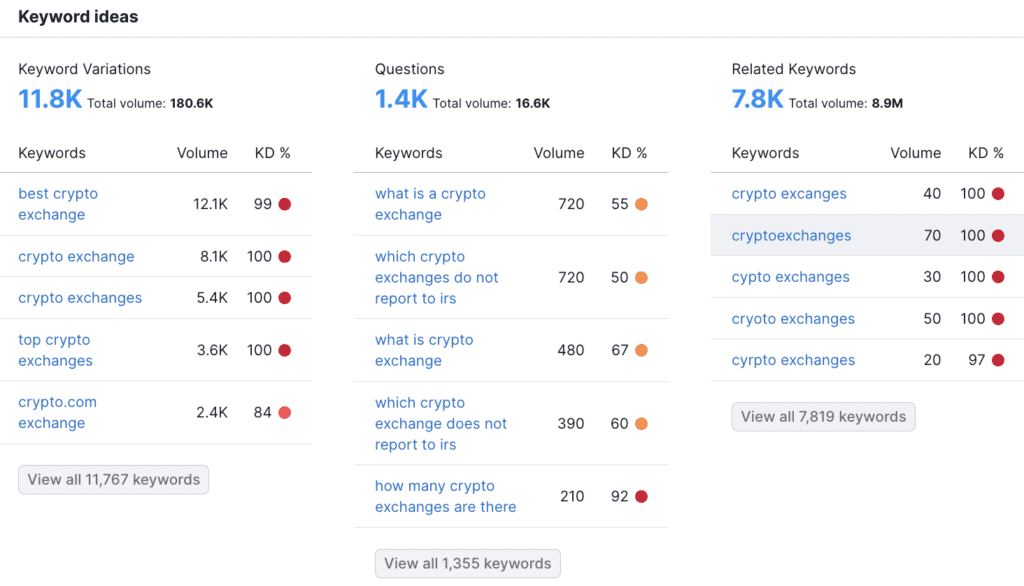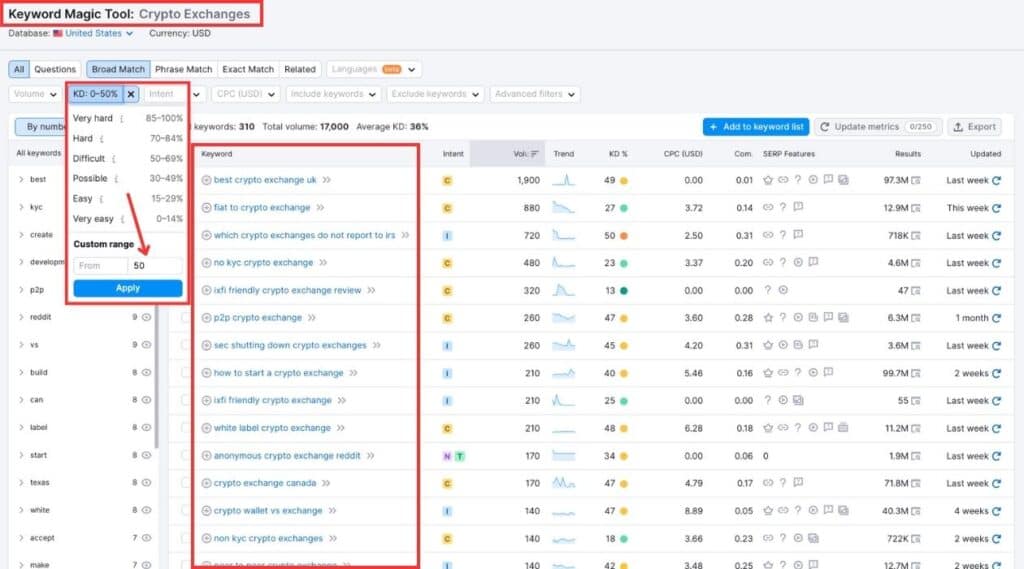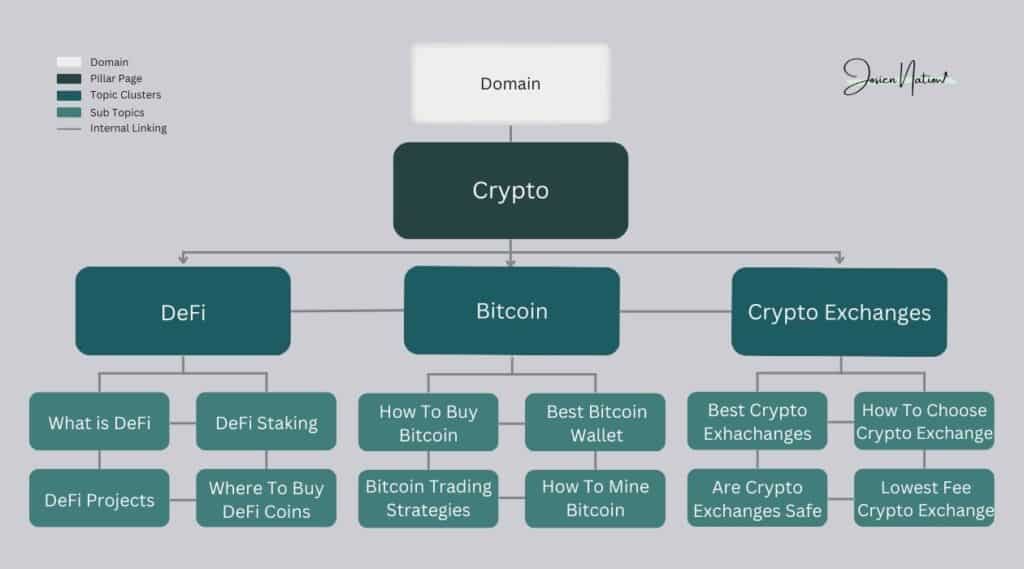Google has been making major changes to its algorithms, which leads content-focused websites to adopt new SEO best practices like topic clusters for content organization.
Despite doing keyword research, regularly producing quality content, using catchy titles, and optimizing metadata and title tags, you may still find that your organic website traffic is flat.
And why is this happening? Because the competition to rank in search engine results is intense, and having great content and choosing the right keywords is no longer enough.
Google now wants to know that you are an authority on your topic. The best way to demonstrate this authority is by organizing your content into pillar pages and topic clusters. Several content-based businesses are quietly altering their web pages to follow this new SEO strategy.
So, let’s dive right into how you can implement topic clusters to improve your website’s search engine ranking.
A topic cluster, also known as a content cluster, is a collection of related content assets on a website that focus on a major topic. Its goal is to offer more in-depth and detailed information about a broader subject.
The topic cluster approach was introduced by HubSpot Research in 2017, commonly referred to as the pillar-and-cluster technique.
This method is based on making pillar content, which covers a wide range of topics and lets you link to other pages within the same pillar. Each of these linked pages discusses a specific subtopic of the main topic.
Topic clustering can give comprehensive and well-organized information to the users. It can also help a website rank higher in search engines by appearing like an authoritative source on a certain topic.
Topic clusters effectively organize the content of your website, which helps search engine crawlers to understand the structure of your site. As a result, search engines may view your site as an authority on a specific topic, which can improve your search rankings.
However, it’s important to note that neither Google nor any other search engine has ever said using topic clusters or mentioned their advantages. The idea aligns with Google’s webmaster guidelines for creating a distinct conceptual page structure. Topic clustering is a structure created by SEOs, not Google, to help with architectural website optimization.
Additionally, topic clusters are closely related to semantic SEO. It aims to address all possible queries a user may have about a specific subject. Grouping your content into semantic clusters, you can give users looking for information on a particular topic a more complete and valuable experience.
Understanding how topic clusters can improve your search rankings requires a look back at 2015 when Google introduced RankBrain. This addition to Google’s core algorithm influenced how the search engine ranks a website.
RankBrain’s primary purpose is to evaluate the relevance and usefulness of content based on search intent. As a result, the emphasis is placed on the quality of the information provided rather than just keyword density.
With lots of content available online, Google wants to ensure that the sites it displays at the top of the SERPs are those that provide the most valuable content.
It is where topic clusters come in. Organizing your content into topic clusters ensures that the information provided is high-quality and comprehensive. This approach not only improves your search rankings but also establishes your brand as an expert in your field.
There are four main components of the topic cluster to structure the pages within a website.
The pillar page is the most important part of your topic cluster. It’s a long article, usually between 3,000 and 5,000 words, that discusses everything to know about a certain topic.
It acts as a complete guide and gives readers a depth insight into the topic. Even though the pillar page covers everything, it still leaves room for the different cluster pages to answer more specific questions.
Unlike the pillar page, which covers a specific topic broadly, cluster content focuses on a targeted keyword related to the topic you want to rank for. These contents are typically shorter than the pillar page, and each contains a text link that brings your reader back to the pillar page. Cluster content offers readers specific information that complements the pillar page.
Internal links are what connect the pillar page and the cluster content. They show how different pieces of content relate to each other and help search engines understand their effectiveness. It also helps people find their way around your site by leading them to related content that they find useful.

Now, if you don’t know where and how to start a content cluster, you’ve come to the right place. Here’s a step-by-step plan to create one:
First, you need to figure out your topic cluster’s main subject.
No matter what topic you choose, it should be specific enough to focus on a single topic but not so specific to provide enough room for content creation. It is a crucial step, as it will be the foundation for your pillar page. It is the main piece of content that covers the main topic and links to other cluster content.
For example, let’s say you have a niche website and newsletter about cryptocurrencies, and your main goal is to grow your newsletter list. The page where your visitors can sign up for the newsletter is your pillar page. To give this authority, you’ll want to create cluster articles surrounding this pillar page. Think about blog articles like “What is the best cryptocurrency to invest in” and “Best cryptocurrency wallet to safely store your crypto”. These blog articles will end with a link that states something like “Stay up to date on crypto and sign up for our newsletter here”.
Still struggling to get more ideas? Keyword research is your friend!
The main reason to use topic clusters is to dominate search engine results pages for whole keyword verticals. When doing keyword research, keyword volume is not the only thing to consider. Instead, think about the problems that users want to solve and how they look for answers.
Also, it’s important to look at your competitors’ content and figure out what makes it successful. You can find keywords your competitors need to focus on using the Keyword Gap Tool. It helps you compare which keywords are bringing traffic to your site and your competitors.
You can utilize this information to determine which areas you can quickly gain an advantage with topic clusters. And which may require more effort and time to improve your rankings.
To find more ideas, open up our favorite keyword research tool.
Type your main topic into the search bar to get a list of long-tail keywords to help you come up with ideas for your clusters.

After hitting the search button, you will see a bunch of results related to “crypto exchanges”.

Notice how high the keyword difficulty (KD%) is? There’s a lot of competition going on out there. Many websites are already ranking for those keywords, and they’re often well-established and authoritative sites.
Here’s a secret: you can find the best keywords with low competition that you can actually use in organic search.
Find the KD settings on the keyword research tool you’re using and put in a range between 0 and 50%. Then hit enter.

Tada! Now you have a lot of topics to cluster under the overarching keyword “crypto exchanges.” The key here is to choose a topic that has the potential to lead to more related topics.
You must create an outline for the pillar page and the topic clusters before constructing them. Begin by considering the pillar page, as the topic clusters will connect back to it.

While creating the pillar page outline, try to cover as many topics as possible while leaving room for additional in-depth subtopics. The topic cluster pages will go into more detail on the topic. Make sure you select relevant topics that can connect back to the pillar page when drafting the outline for the topic clusters.
After combining your topic ideas from the ideation phase, keywords you researched, and outlines, you are ready to produce quality content.
When creating quality content, it’s essential to keep your target audience in mind. After all, you want them to be excited to read what you’ve written! So make sure your content is engaging and relevant to their interests. That way, they’ll be eager to learn more and keep coming back for more great content from you.
Remember, your competitors are writing about similar topics. So, you must create content that is engaging and stands out. It means that your content should be unique and authoritative. You’ll have to mention other articles if you used them as a resource, but make sure you’re not just copying what they’ve done. Instead, try to make valuable content and go above and beyond what’s already out there.
At this point, you need a good overview of your topic cluster to ensure nothing is missed. By mapping out your existing content into groups of related topics, you can organize your post, making it easy for website visitors to find what they’re looking for.
You can do this by using internal links. When you link to related content, you help your readers and show search engines that your site is an expert in your field or niche.
When people click and stay on your website, it shows search engines that your page is popular, and you have high-quality, comprehensive, and well-organized content. These factors are critical to your search rankings.
And now, for the most important part, internal linking. You need to strategically link your content to make the most out of it.
You can achieve this by connecting your clusters and pillar pages through links. Ensure that every piece of cluster content links back to the pillar page and that the pillar page contains links to cluster content.
But your work doesn’t end once you’ve published your content. As you add new content to the pillar page, you must keep adding internal links to the topic clusters supporting it.
Even if your content already ranks well, you should keep updating it to keep it relevant in your industry. It can help you stay ahead of the competition and boost the performance of your content.
The topic cluster model provides an excellent approach for content organization, benefiting both users and search engines. By adopting this SEO strategy, you can effectively boost your website traffic and establish your brand as an authority in your industry.
If you find yourself struggling to attract more visitors to your website, developing authoritative content through topic clusters could be the solution. Or hire me as your freelance SEO specialist to help you and give you results!
It’s worth noting that achieving top-ranking positions on Google’s search results may take time and effort. However, implementing the topic cluster model as part of your inbound marketing strategy could yield significant and long-term benefits for your business.